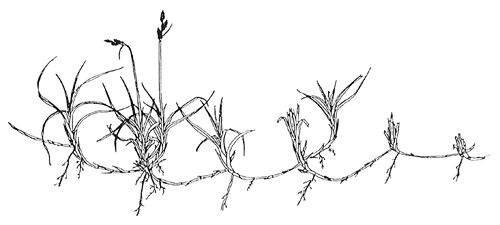Benefits by the physiological integration of interconnected shoots
The short growing season and cold conditions in arctic-alpine environments have selected for slow growing perennials with development processes extended over more than one season. In the most extreme habitats cushion plants dominate, in less extreme habitats clonal plants with lateral spread are common.
Despite the costs of maintaining connections between ramets (respiratory costs, higher risk of genet mortality), many clonal plants maintain an interconnected shoot sytem of considerable size.
When connections between parent and daughter ramets persist for some time, the shoot system may be physiologically integrated to a variable degree, i.e. photosynthates and nutrients may be shared among ramets. Strong integration over large distances is particularly frequent in clonal plants from cold environment.


Adaptive advantages of interconnected ramets to cold environments
- Roots of interconnected ramets may stay alive much longer than photosynthetic structures. When nutrients are more limited than carbohydrates it is beneficial to take them up from many sites and to explore large areas of soil.
- Persistent connection allow for a more efficient use of resources. By intraclonal control of ramet fecundity and lateral growth, limited resources may be concentrated into the few most successful ramets.
- When older parts of a clone are senescing, nutrients are recycled to young and actively growing parts.
- Physiological integration within a clone buffers the extreme patchyness in cold environments, but also the effects of herbivore attacks.
